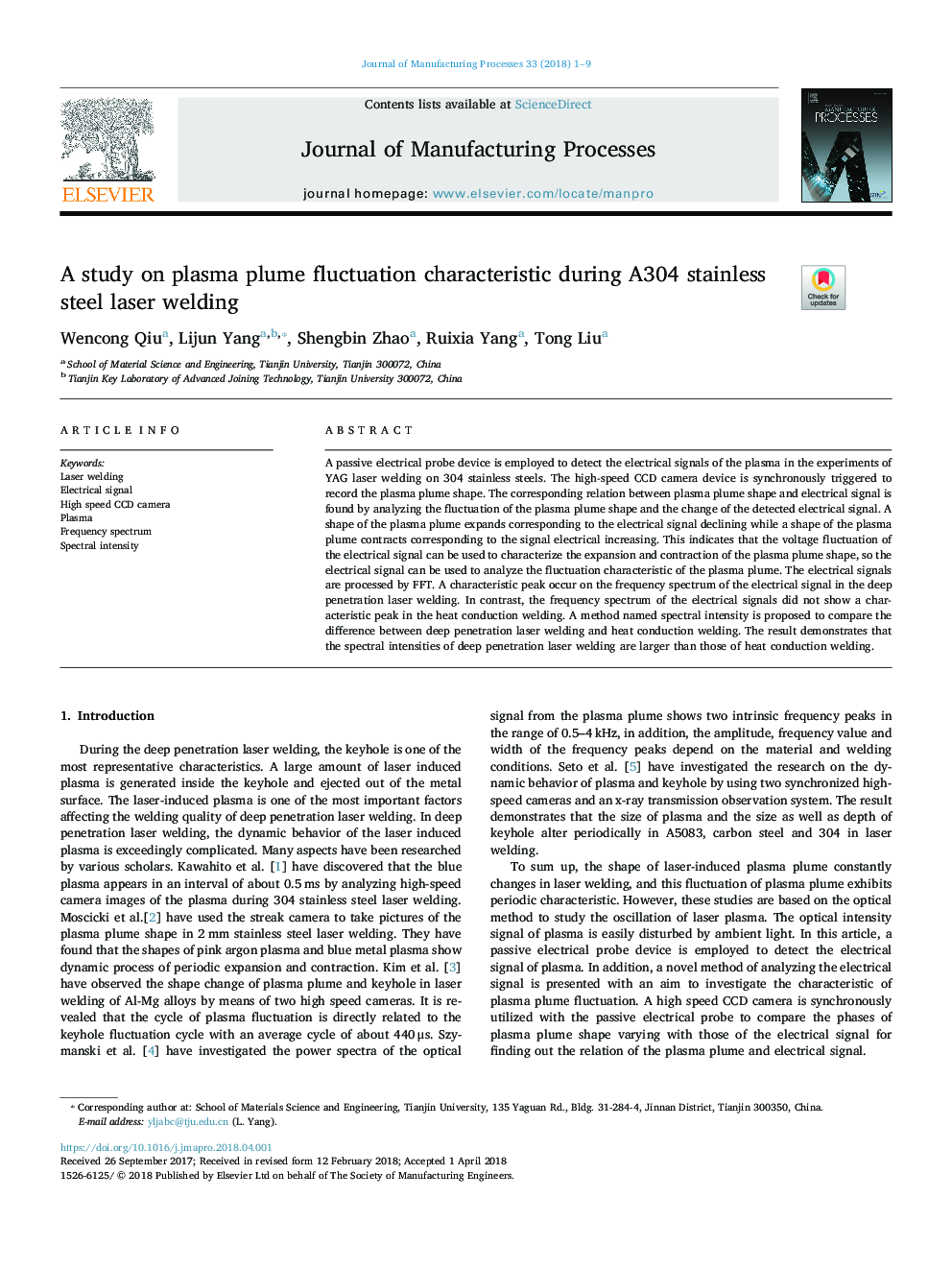| Article ID | Journal | Published Year | Pages | File Type |
|---|---|---|---|---|
| 8047863 | Journal of Manufacturing Processes | 2018 | 9 Pages |
Abstract
A passive electrical probe device is employed to detect the electrical signals of the plasma in the experiments of YAG laser welding on 304 stainless steels. The high-speed CCD camera device is synchronously triggered to record the plasma plume shape. The corresponding relation between plasma plume shape and electrical signal is found by analyzing the fluctuation of the plasma plume shape and the change of the detected electrical signal. A shape of the plasma plume expands corresponding to the electrical signal declining while a shape of the plasma plume contracts corresponding to the signal electrical increasing. This indicates that the voltage fluctuation of the electrical signal can be used to characterize the expansion and contraction of the plasma plume shape, so the electrical signal can be used to analyze the fluctuation characteristic of the plasma plume. The electrical signals are processed by FFT. A characteristic peak occur on the frequency spectrum of the electrical signal in the deep penetration laser welding. In contrast, the frequency spectrum of the electrical signals did not show a characteristic peak in the heat conduction welding. A method named spectral intensity is proposed to compare the difference between deep penetration laser welding and heat conduction welding. The result demonstrates that the spectral intensities of deep penetration laser welding are larger than those of heat conduction welding.
Related Topics
Physical Sciences and Engineering
Engineering
Industrial and Manufacturing Engineering
Authors
Wencong Qiu, Lijun Yang, Shengbin Zhao, Ruixia Yang, Tong Liu,
